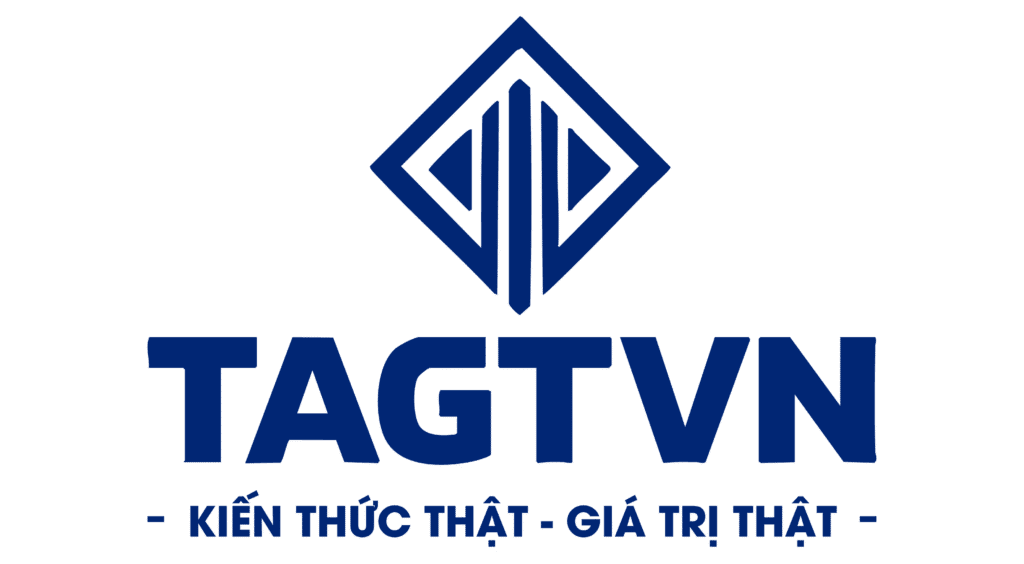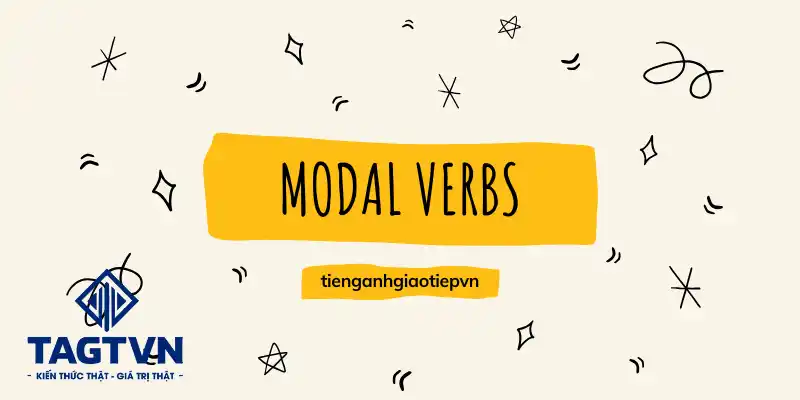Bạn có bao giờ thắc mắc điều gì khiến một câu tiếng Anh ngắn ngủi lại có khả năng thể hiện sắc thái cầu khiến, phỏng đoán, hay thậm chí là sự tự tin? Đó là khi chúng ta sử dụng dạng câu có chứa Động Từ Khiếm Khuyết để bày tỏ quan điểm cũng như ý kiến của mình.
Hãy cùng tienganhgiaotiepvn khám phá xem Động Từ Khiếm Khuyết là gì, chúng mạnh mẽ ra sao và cách bạn có thể sử dụng thành thạo.
Khái niệm và đặc điểm của Động Từ Khiếm Khuyết

Tìm hiểu động từ khiếm khuyết là gì?
Trong tiếng Anh, Động Từ Khiếm Khuyết (modal verbs) như can, could, may, might, must, should… giúp ta bày tỏ khả năng, sự cho phép, lời khuyên, nghĩa vụ hay chỉ đơn giản là một dự đoán.
Động Từ Khiếm Khuyết có gì đặc biệt?
- Không thay đổi theo thì – bạn sẽ không bao giờ thấy chúng có dạng -s hay -ed.
- Luôn đứng trước động từ nguyên mẫu, tạo thành cặp gọn nhẹ mà đầy sức mạnh.
Bảng tổng hợp các Động Từ Khiếm Khuyết trong tiếng Anh

Tổng hợp những động từ khuyết thiếu trong tiếng anh.
| Động Từ Khiếm Khuyết | Nghĩa cơ bản |
| can | có thể |
| could | có thể (lịch sự / quá khứ) |
| may | có thể |
| might | có thể (mức độ thấp hơn may) |
| must | phải; bắt buộc |
| should | nên |
| ought to | nên |
| shall | sẽ (thường với I/we); gợi ý, đề xuất |
| will | sẽ |
| would | sẽ (dạng quá khứ của will); lời đề nghị, yêu cầu lịch sự |
| need | cần (dùng ở dạng Động Từ Khiếm Khuyết) |
| dare | dám (dùng ở dạng Động Từ Khiếm Khuyết) |
| used to | đã từng (diễn tả thói quen, trạng thái trong quá khứ) |
Ví dụ về Động Từ Khiếm Khuyết

Ví dụ động từ khuyết thiếu trong tiếng Anh.
- Leaders must foster an environment that encourages critical dialogue.
- We might encounter unforeseen obstacles during the implementation phase.
- Could you elaborate on how this methodology improves accuracy?
- Investors should diversify their portfolios to mitigate systemic risk.
- This innovation could revolutionize the way data is processed and stored.
- We may need to recalibrate our strategy based on emerging trends.
- Might we consider an alternative revenue model for greater sustainability?
- All applicants must demonstrate a high level of analytical proficiency.
- Shall we convene a follow-up meeting to address remaining concerns?
- The team can expedite the process by leveraging automation tools.
- You ought to evaluate the long-term implications before proceeding.
- Dare we challenge the prevailing assumptions that limit innovation?
- They will unveil the prototype at the upcoming international expo.
- Would you be willing to collaborate on this cross-disciplinary initiative?
- Need we remind stakeholders of the importance of timely feedback?
Cách sử dụng Động Từ Khiếm Khuyết

Sử dụng động từ khiếm khuyết sao cho đúng?
Động Từ Khiếm Khuyết (modal verbs) giúp câu tiếng Anh của bạn không còn khô cứng, mà trở nên mềm mại và có sắc thái hơn rất nhiều.
- Diễn đạt khả năng: Ella can play three musical instruments fluently.
- Xin phép hoặc yêu cầu lịch sự: Could I sit here for a moment?
- Cho lời khuyên, gợi ý: You should drink more water during hot days.
- Thể hiện sự bắt buộc hoặc chắc chắn: Drivers must fasten their seatbelts at all times.
- Phỏng đoán về hiện tại hoặc tương lai: He might join us later if he finishes work early.
Điểm thú vị nhất là chỉ cần thay đổi một modal verb, bạn có thể thay đổi hoàn toàn mức độ chắc chắn, lịch sự hay quyết đoán của câu. Chính vì vậy, muốn giao tiếp tự tin trong tiếng anh, bạn cần nắm vững cách dùng Động Từ Khiếm Khuyết.
Các loại Động Từ Khiếm Khuyết thường gặp
Hiểu rõ được công dụng của từng loại Động Từ Khiếm Khuyết dưới đây cùng tienganhgiaotiepvn.
Can / Could – Khả năng, xin phép và lời đề nghị đầy tự tin
Can thể hiện năng lực, sự thành thạo hoặc xin phép nhẹ nhàng; could lại lịch sự, tinh tế và dùng được cho quá khứ hoặc lời đề nghị trang nhã.
Ví dụ:
- Oliver can articulate complex ideas effortlessly.
- Could you elaborate on your perspective regarding this hypothesis?
May / Might – Khả năng xảy ra & xin phép
May thường mang tính xác suất khá cao, còn might chỉ mức độ thấp hơn và có chút “khiêm nhường”. Cả hai đều tỏa ra phong thái trang trọng.
Ví dụ:
- The conference may commence earlier than scheduled.
- Might I propose an alternative strategy to enhance efficiency?
Must – Sự bắt buộc tuyệt đối và phán đoán
Must nhấn mạnh điều cần phải làm hoặc đưa ra kết luận với mức độ tin tưởng gần như tuyệt đối.
Ví dụ:
- Participants must adhere strictly to the confidentiality agreement.
- Given her eloquence, she must have practiced extensively beforehand.
Should / Ought to – Lời khuyên
Should phổ biến và mềm mại hơn; ought to lại có vẻ “cổ điển” và đôi khi tạo cảm giác trang trọng, trí tuệ hơn.
Ví dụ:
- You should diversify your skill set to remain competitive.
- We ought to prioritize sustainability in our long-term strategy.
Shall / Will / Would – Ý định, lời mời, dự đoán
- Will: diễn đạt dự đoán, cam kết, quyết định ngay lúc nói.
- Shall: gợi ý hoặc đề xuất, thường dùng với “I” và “we”, tạo sắc thái lịch thiệp.
- Would: lời mời, đề nghị hoặc điều kiện giả định, nghe nhẹ nhàng và tinh tế.
Ví dụ:
- I will finalize the comprehensive report by tomorrow noon.
- Shall we reconvene after the short recess?
- Would you be willing to collaborate on this innovative project?
Need / Dare – Hai modal verbs “ẩn mình” nhưng vẫn đầy cá tính
Dù ít dùng hơn, need và dare ở dạng khiếm khuyết vẫn mang sắc thái đặc biệt: mạnh mẽ và hơi “cổ điển”.
Ví dụ:
- Need you question the validity of this empirical data?
- He dare not contradict the director’s meticulously crafted plan.
Sau Động Từ Khiếm Khuyết là gì?

Động từ khiếm khuyết + verb gì?
Vậy sau Động Từ Khiếm Khuyết + V gì? Khi dùng Động Từ Khiếm Khuyết (modal verbs), chúng ta luôn đặt sau đó một động từ nguyên mẫu không “to” (còn gọi là bare infinitive).
Cấu trúc cơ bản: Modal verb + Verb (bare infinitive)
Bare infinitive chính là dạng gốc của động từ, không chia thì, không thêm “-s”, “-ed” hay “-ing” và không có “to” ở trước.
Bản thân modal verbs như can, could, may, might, must, shall, should, will, would, need, dare đã mang nghĩa và thì của câu. Vì thế, động từ chính không cần chia thêm. Việc để nguyên ở dạng nguyên mẫu giúp câu ngắn gọn, súc tích và dễ hiểu.
| Động Từ Khiếm Khuyết | Ví dụ |
| can | She can articulate her ideas with remarkable clarity. |
| could | Could you expound on your proposal during the meeting? |
| may | He may transition into a leadership role next quarter. |
| might | They might postpone the launch due to market conditions. |
| must | Every participant must observe all established safety rules. |
| should | You should work on improving your critical thinking. |
| ought to | We ought to reassess our long-term objectives. |
| shall | Shall we commence the workshop at 9 a.m.? |
| will | I will compile the final report by the end of the day. |
| would | Would you consider partnering with us on this initiative? |
| need | Need you question the credibility of this evidence? |
| dare | He dare not contradict the board’s unanimous decision. |
*Lưu ý: chỉ riêng ought to đi với “to + Verb”, còn lại là bare infinitive.
Ngữ pháp về thể bị động của Động Từ Khiếm Khuyết
Câu bị động với modal verbs được hình thành theo công thức: Modal verb + be + past participle (V3)
Modal verbs đã thể hiện rõ sắc thái (khả năng, bắt buộc, dự đoán, đề nghị…), đồng thời đóng vai trò “bản lề” trong ngữ pháp tiếng anh nâng cao. Trong câu bị động, “be” ở nguyên mẫu giúp cấu trúc giữ nguyên thì, số (singular/plural) và vẫn đúng quy tắc sau modal verb.
Việc thêm “V3” (past participle) biến động từ chính thành dạng bị động: hành động “được thực hiện” chứ không “chủ động thực hiện”.
Hướng dẫn cách viết lại câu chủ động → bị động với modal verbs
- Bước 1: Xác định tân ngữ trong câu chủ động → sẽ trở thành chủ ngữ mới trong câu bị động.
- Bước 2: Giữ nguyên modal verb (can, could, may, must, should, will, would…).
- Bước 3: Thêm “be”.
- Bước 4: Thêm động từ chính ở dạng V3.
- Bước 5: (Tùy chọn) Giữ lại chủ ngữ cũ dưới dạng “by + …” nếu cần thiết để rõ ai thực hiện hành động.
Bảng ví dụ:
| Câu chủ động | Câu bị động |
| The committee must finalize the proposal by Monday. | The proposal must be finalized by Monday. |
| We can implement this strategy next quarter. | This strategy can be implemented next quarter. |
| They might postpone the seminar due to unforeseen events. | The seminar might be postponed due to unforeseen events. |
| Experts should evaluate the environmental impact. | The environmental impact should be evaluated by experts. |
Bài tập Động Từ Khiếm Khuyết kèm đáp án

Làm bài tập động từ khiếm khuyết và đáp án.
Bài 1: Viết lại câu dùng động từ khiếm khuyết
- The board is required to approve the new policy.
- It’s possible that we will identify new market segments.
- It’s advisable to revisit the budget projections quarterly.
- The data will probably show a positive trend next quarter.
- There’s a chance that this approach will reduce operational costs.
- It is essential to protect sensitive information.
- Perhaps a different framework would fit this context better.
- It is necessary to align strategies across departments.
- It is recommended to consult external advisors before launching.
- We plan to finalize the report by Friday.
- It is possible to address these concerns in the next session.
- Do you want to join the project?
- Let’s discuss the key metrics after lunch.
- They intend to publish the findings in an international journal.
- Is it necessary to emphasize this aspect again?
Bài 2: Điền Động Từ Khiếm Khuyết (modal verbs) thích hợp vào chỗ trống
- We ________ reassess our long-term objectives to stay competitive.
- ________ you elaborate on the rationale behind this approach?
- The report ________ be submitted before the quarterly review.
- They ________ launch the pilot program as early as next month.
- Stakeholders ________ be informed promptly about major updates.
- We ________ encounter unforeseen variables affecting the timeline.
- ________ we schedule a follow-up workshop to refine these ideas?
- The proposal ________ significantly enhance operational efficiency.
- You ________ prioritize data integrity in all analytical processes.
- Teams ________ align their strategies to avoid resource duplication.
- Analysts ________ identify emerging trends that others overlook.
- ________ we challenge the conventional assumptions limiting innovation?
- The final version ________ include feedback from multiple departments.
- This strategy ________ prove effective in volatile market conditions.
- ________ you be willing to mentor new team members during onboarding?
Bài 3: Điền Động Từ Khiếm Khuyết (modal verb) phù hợp vào mỗi chỗ trống
In order to remain competitive in an increasingly volatile market, organizations ________ continuously reassess their strategic priorities. Leaders ________ consider adopting agile frameworks that ________ facilitate faster decision-making and better adaptability. At the same time, data privacy protocols ________ be strictly enforced, as any breach ________ severely damages brand reputation.
Furthermore, cross-functional teams ________ collaborate proactively to identify emerging risks and opportunities. Senior management ________ convene quarterly reviews to ensure that objectives remain aligned with external trends. In some cases, unforeseen variables ________ delay implementation timelines; therefore, contingency plans ________ always be in place.
Finally, stakeholders ________ be engaged early and often to gather meaningful feedback. By doing so, organizations ________ unlock insights that ________ shape more resilient and forward-looking strategies.
Đáp án
Bài 1:
- The board must approve the new policy without further delay.
- We might identify new market segments in the upcoming analysis.
- We should revisit the budget projections on a quarterly basis.
- The data may reveal a positive trend in the next quarter.
- This approach could reduce operational costs significantly.
- We must safeguard sensitive information at all times.
- We might adopt a different framework more suited to this context.
- Departments need to align their strategies for cohesive execution.
- We ought to consult external advisors before moving forward.
- We will finalize the report by Friday as scheduled.
- We can address these concerns during the next session.
- Would you consider joining the project to bring fresh insights?
- Shall we discuss the key metrics once lunch concludes?
- They will publish the findings in an international peer-reviewed journal.
- Need we emphasize this aspect further, given the existing clarity?
Bài 2:
- Should reassess our long-term objectives to stay competitive.
- Could you elaborate on the rationale behind this approach?
- Must be submitted before the quarterly review.
- Could launch the pilot program as early as next month.
- Must be informed promptly about major updates.
- Might encounter unforeseen variables affecting the timeline.
- Shall we schedule a follow-up workshop to refine these ideas?
- Could significantly enhance operational efficiency.
- Should prioritize data integrity in all analytical processes.
- Need to align their strategies to avoid resource duplication.
- Might identify emerging trends that others overlook.
- Dare we challenge the conventional assumptions limiting innovation?
- Should include feedback from multiple departments.
- May prove effective in volatile market conditions.
- Would you be willing to mentor new team members during onboarding?
Bài 3:
- must
- should
- can
- must
- could
- should
- should
- might
- should
- must
- may
- could

